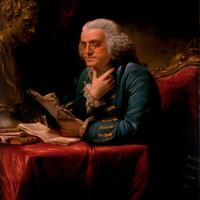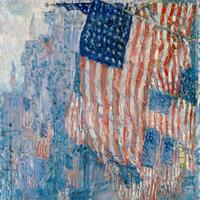More about White House
Works at White House

Contributor
When the world is ending you know the best way out of the planet is through the White House.
Every President during the apocalypse decides to stay back and fight, anyhow. Seize the opportunity. Take their spot.
The White House is the most important house in the United States of America. Noble, corrupt, and twisted presidents have lived and passed within these walls, except George Washington. He laid the cornerstone in 1792. Eight years later, President John Adams and his wife Abigail moved in.
The white house building was designed by James Hoban, an Irish architect, who had a thriving practice in South Carolina. He designed a number of government buildings there, including the Charleston County Courthouse. Back then, it seems that Americans were very trusting of immigrants. Hoban had only been in the country for eight years when his design for the White House was chosen.
Funny story, in 1814, the British burned the White House down, among other institutions. For 26 hours, the British lay siege over the capital. The next day, a major storm blew over Washington, killing all the British troops. So the "Perfect Storm" does exist, just not the way we imagined it.
After the Americans regained control of the capital, James Hoban was put back to work. He finished the second iteration of the White House in 1818. Numerous additions were made to the building after its resurrection. The North Portico was added in 1830, the South Portico in 1824, the West Wing in 1909, and the first Oval Office in 1902.
The White House was never hit again. When Mother Nature is on your side, even the British can’t win. Today the White House has 132 rooms, 35 bathrooms, 412 doors, 147 windows, 28 fireplaces, 8 staircases, 3 elevators, and a remarkable art collection. Now, that is a big house. It would make for a pretty crazy "Home Alone" sequel.
Sources
- "White House Cornerstone Laid." History.com. November 24, 2009. Accessed June 10, 2019. https://www.history.com/this-day-in-history/white-house-cornerstone-laid.
- "James Hoban: Architect of the White House." WHHA (en-US). Accessed June 10, 2019. https://www.whitehousehistory.org/construction-of-the-white-house/james…
- "War of 1812: The Burning of Washington and How a Freak Storm Saved the Day." The Vintage News. October 19, 2018. Accessed June 10, 2019. https://www.thevintagenews.com/2018/10/12/burning-of-washington/
- "The White House Building." The White House. Accessed June 11, 2019. https://www.whitehouse.gov/about-the-white-house/the-white-house/
Featured Content
Here is what Wikipedia says about White House

The White House is the official residence and workplace of the president of the United States. Located at 1600 Pennsylvania Avenue NW in Washington, D.C., it has served as the residence of every U.S. president since John Adams in 1800 when the national capital was moved from Philadelphia. The term "White House" is often used as metonymy for the president and his advisers.
The residence was designed by Irish-born architect James Hoban in the Neoclassical style. Hoban modeled the building on Leinster House in Dublin, a building which today houses the Oireachtas, the Irish legislature. Construction took place between 1792 and 1800, with an exterior of Aquia Creek sandstone painted white. When Thomas Jefferson moved into the house in 1801, he and architect Benjamin Henry Latrobe added low colonnades on each wing to conceal what then were stables and storage. In 1814, during the War of 1812, the mansion was set ablaze by British forces in the burning of Washington, destroying the interior and charring much of the exterior. Reconstruction began almost immediately, and President James Monroe moved into the partially reconstructed Executive Residence in October 1817. Exterior construction continued with the addition of the semicircular South Portico in 1824 and the North Portico in 1829.
Because of crowding within the executive mansion itself, President Theodore Roosevelt had all work offices relocated to the newly constructed West Wing in 1901. Eight years later, in 1909, President William Howard Taft expanded the West Wing and created the first Oval Office, which was eventually moved and expanded. In the Executive Residence, the third floor attic was converted to living quarters in 1927 by augmenting the existing hip roof with long shed dormers. A newly constructed East Wing was used as a reception area for social events; Jefferson's colonnades connected the new wings. The East Wing alterations were completed in 1946, creating additional office space. By 1948, the residence's load-bearing walls and wood beams were found to be close to failure. Under Harry S. Truman, the interior rooms were completely dismantled and a new internal load-bearing steel frame was constructed inside the walls. On the exterior, the Truman Balcony was added. Once the structural work was completed, the interior rooms were rebuilt.
The present-day White House complex includes the Executive Residence, the West Wing, the East Wing, the Eisenhower Executive Office Building, which previously served the State Department and other departments (it now houses additional offices for the president's staff and the vice president), and Blair House, a guest residence. The Executive Residence is made up of six stories: the Ground Floor, State Floor, Second Floor, and Third Floor, and a two-story basement. The property is a National Heritage Site owned by the National Park Service and is part of the President's Park. In 2007, it was ranked second on the American Institute of Architects list of America's Favorite Architecture.
Check out the full Wikipedia article about White House












